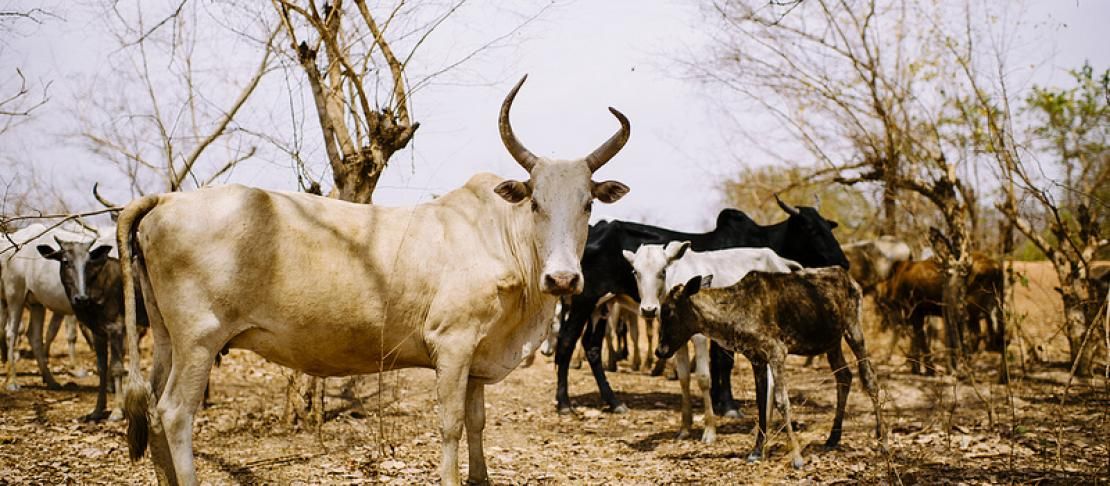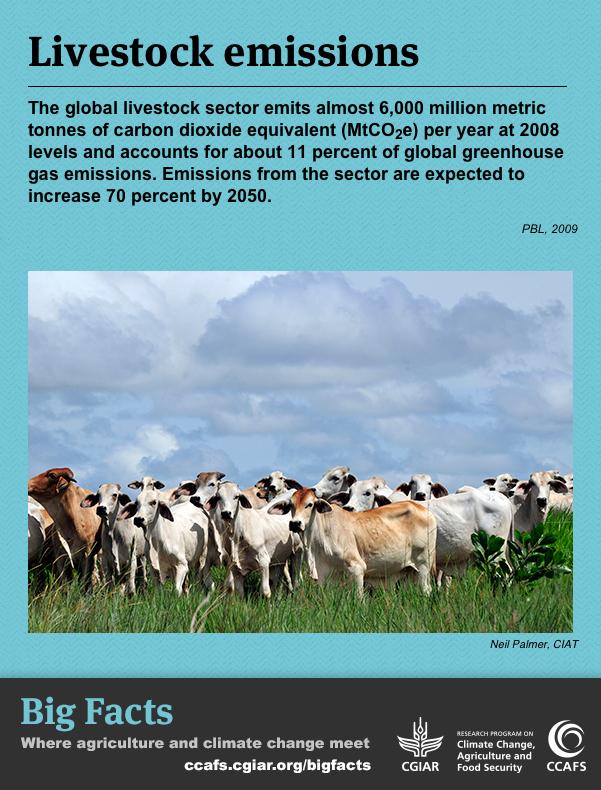How much greenhouse gases do cattle emit? New study provides answers

A new study shows in great details what farm animals in many parts of the world eat, how efficiently the feed is converted into milk, eggs and meat, and the volume of greenhouse gases the various animals produce as a result.
The livestock study concludes that cattle are the biggest source of emissions, globally accounting for more than three-quarters of all greenhouse gases produced by livestock. Pork and poultry account for only 10 per cent of the global livestock emissions.
The detailed analysis is based on a unique and comprehensive dataset, and provides a number of answers to the recurring questions regarding the greenhouse gas emissions caused by livestock.
The study was funded by the International Livestock Research Institute (ILRI), the Commonwealth Scientific and Industrial Research Organisation (CSIRO), and CCAFS. One of the key findings was that farm animals such as pigs, cattle, poultry and small ruminants, in low-income countries require far more food to produce a kilo of protein than animals in wealthy countries and produce more emissions than farm animals in industrialized countries.
The study, published in the journal Proceedings of the National Academy of Sciences (PNAS), also shows that the quality of an animal’s diet makes a major difference in both feed efficiency and emission intensity.
As an example, in arid regions of sub-Saharan Africa where available animal fodder is of much lower quality than that in many other regions, a cow can consume up to ten times more feed, in the form of rangeland grasses, to produce a kilo of protein than a cow that has better fodder and lives under better conditions.
As mentioned in an ILRI news article, this finding also shows that pork and poultry are being produced far more efficiently than milk and beef, and greenhouse gas emissions vary widely depending on the animal involved and the quality of its diet.
Mario Herrero, lead author of the study stated in an accompanying article by BBC News, that "there has been a lot of research focused on the challenges at the global level but if the problems are global, the solutions are almost all local and very situation-specific."
Watch Mario Herrero discuss mitigation opportunities within the livestock sector in a live-streamed science seminar:
Researchers from the CGIAR Research Program on Climate Change, Agriculture and Food Security (CCAFS) and the International Institute for Applied Systems Analysis (IIASA) were also part of this research project and article.
Learn more about this milestone study on the ILRI News site: As livestock eat, so they emit: Highly variable diets drive highly variable climate change ‘hoofprints’–BIG new study
Read the full paper in the Proceedings of the National Academy of Sciences: Biomass use, production, feed efficiencies and greenhouse gas emissions from global livestock systems, by Mario Herrero (ILRI), Petr Havlík (ILRI and IIASA), Hugo Valin (IIASA), An Notenbaert (ILRI), Mariana Rufino (ILRI), Philip Thornton (ILRI/CCAFS), Michael Blümmel (ILRI), Franz Weiss (IIASA), Delia Grace (ILRI) and Michael Obersteiner (IIASA).
Read an introduction to the article: Livestock and global change: Emerging issues for sustainable food systems
The article in the news:
BBC News article: Cattle are top global livestock emitters
IRIN Article: Cattle in poor countries produce more earth-warming gases
